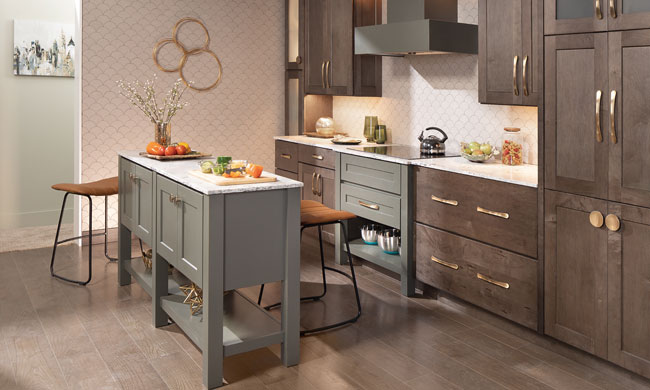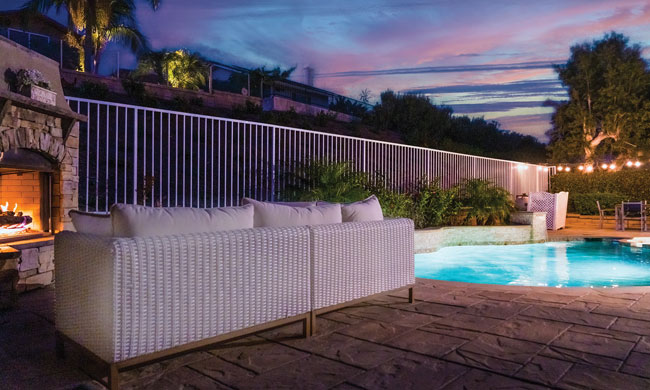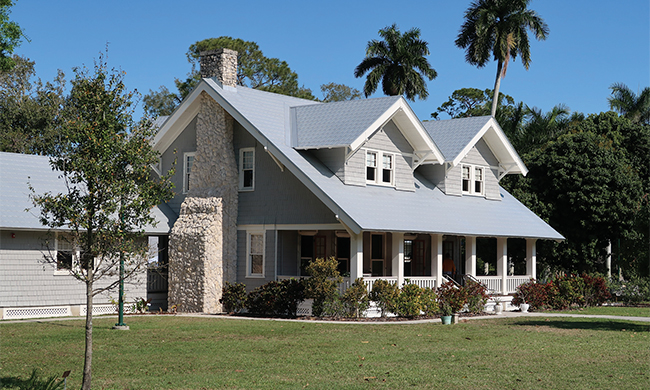
(Family Features) As the leaves begin to change and temperatures start to drop, it’s time to start thinking about preparing your home for the cooler months. With a few simple steps, you can ensure your haven of comfort stays warm, inviting and energy-efficient throughout fall and winter.
Consider these home projects from the experts at Westlake Royal Building Products– a leader throughout North America in innovation, design and production of exterior and interior building products including siding, trim, mouldings, roofing, stone, windows, outdoor living and more – based on Zonda’s 2024 Cost vs. Value Report to get your home ready for the cooler seasons.
Upgrade Your Garage
 New garage doors typically come with energy-efficient features and advanced security measures but are also relatively low-cost updates compared to the significant perceived value and resale benefits. In fact, replacing a garage door boasts a 193% return on investment, according to the report. Pairing new garage doors with updated trim can also offer a tight seal from exterior elements such as wind, snow and water.
New garage doors typically come with energy-efficient features and advanced security measures but are also relatively low-cost updates compared to the significant perceived value and resale benefits. In fact, replacing a garage door boasts a 193% return on investment, according to the report. Pairing new garage doors with updated trim can also offer a tight seal from exterior elements such as wind, snow and water.
Insulate for a Warmer Interior
Insulated siding can play a crucial role in enhancing your home’s thermal performance. By providing an additional layer of protection, it helps reduce heat loss, ensuring your home remains warm and your energy bills stay manageable. Plus, according to the report, vinyl siding replacement has an 80.2% return on investment. An option like CraneBoard Solid Core Siding from Westlake Royal Building Products offers superior durability and insulation. Its solid core construction provides added strength and impact resistance while also contributing to better energy efficiency. In addition, the solid core reduces external noise and is designed to endure extreme weather conditions.
Leak-Proof Your Home’s Windows
Windows can be substantial energy drainers and let warmth out when they’re not properly sealed. If you notice a draft coming in around your windows, sealing cracks or gaps with aesthetically pleasing trim can make a significant difference in keeping the heat in and chilly air out. For extreme drafts, consider replacing windows altogether, which can provide sellers with an average 67.1% return on vinyl window replacement, according to the report.
Shield Your Roof
Your roof is your home’s first line of defense against the elements. Check for damaged shingles or tiles and make necessary repairs to prevent leaks. If a roof replacement is needed – which provides a 56.9% return on investment using asphalt shingles, according to the report – consider incorporating a high-quality roofing underlayment to provide an extra layer of protection against water, heavy snow and ice. For example, Sol-R-Skin BLUE, an external insulating underlayment from Westlake Royal Building Products, complements steep slope roofing. This underlayment serves as a secondary water protective layer, energy-saving radiant barrier and above-deck roof insulation blanket that is all-in-one. It incorporates an anti-glare coating in cool blue, making it easier and safer to install than alternative shiny radiant barrier options.
To learn more about high-performance products for your home, visit WestlakeRoyalBuildingProducts.com.
Westlake Royal Building Products









 (Family Features) Whether you’re looking to add value for potential sale or simply create a more comfortable living space, now is the perfect time to breathe new life into your home with projects that provide a high return on investment (ROI).
(Family Features) Whether you’re looking to add value for potential sale or simply create a more comfortable living space, now is the perfect time to breathe new life into your home with projects that provide a high return on investment (ROI).
 Protect Your Home with a Secure Front Door
Protect Your Home with a Secure Front Door

 Painted cabinets had their moment, but the latest designs are revealing a movement back toward warm wood grains, specifically oak. As trends continue to shift toward embracing natural elements, as well as exploring diverse color palettes, cabinet manufacturers are constantly innovating to meet the demands of consumers and design professionals alike.
Painted cabinets had their moment, but the latest designs are revealing a movement back toward warm wood grains, specifically oak. As trends continue to shift toward embracing natural elements, as well as exploring diverse color palettes, cabinet manufacturers are constantly innovating to meet the demands of consumers and design professionals alike.



